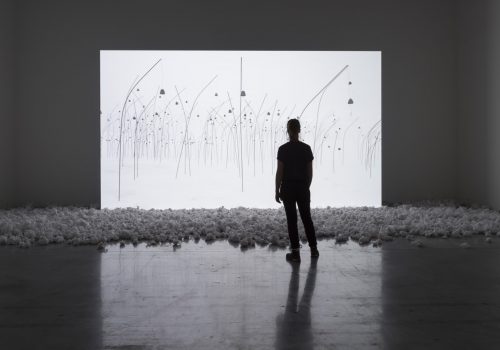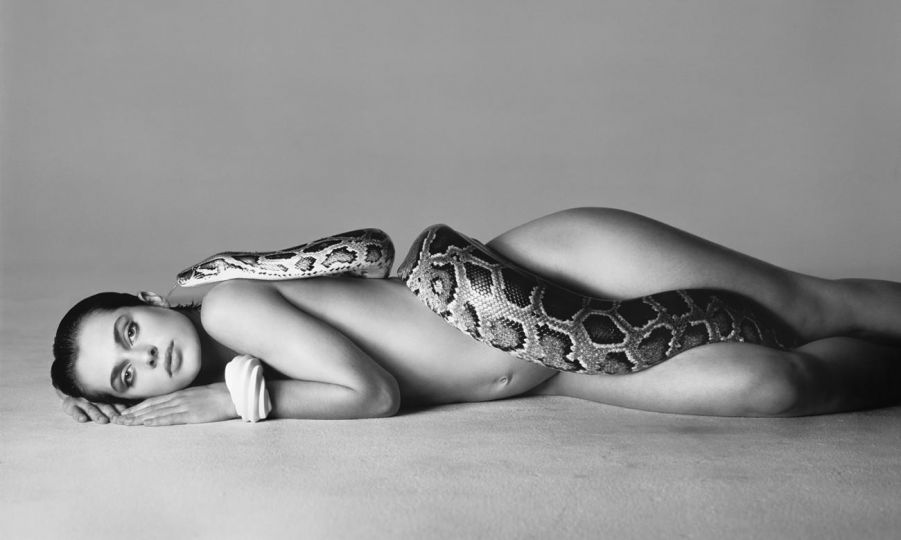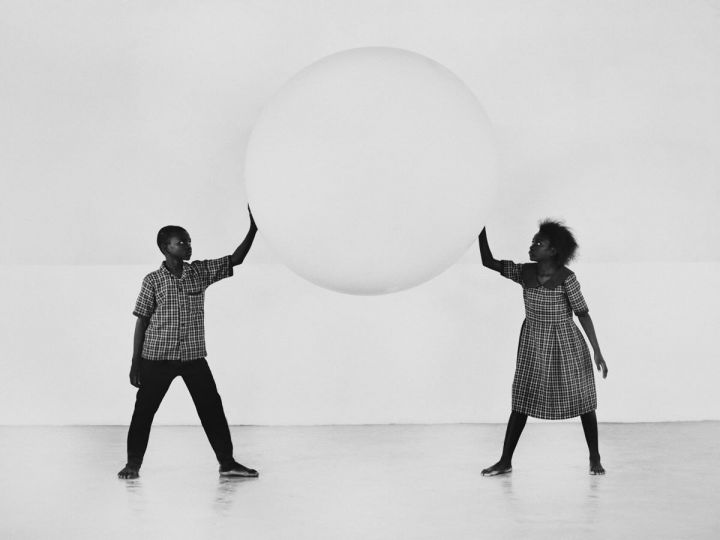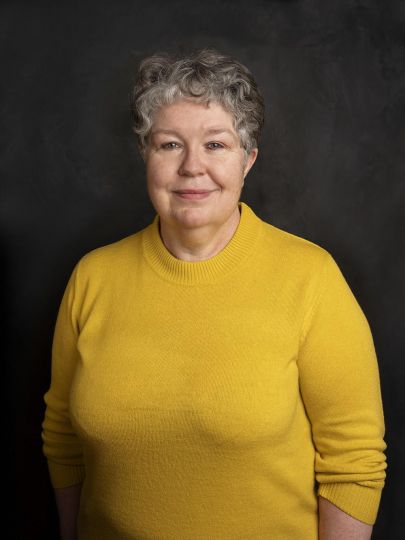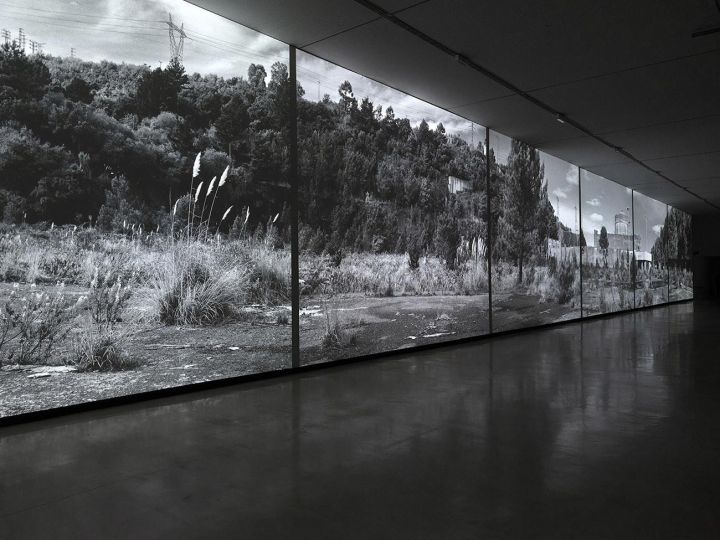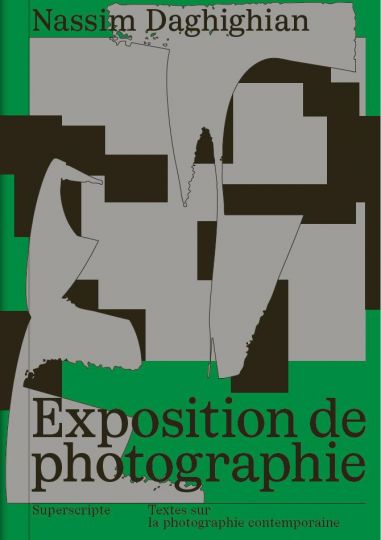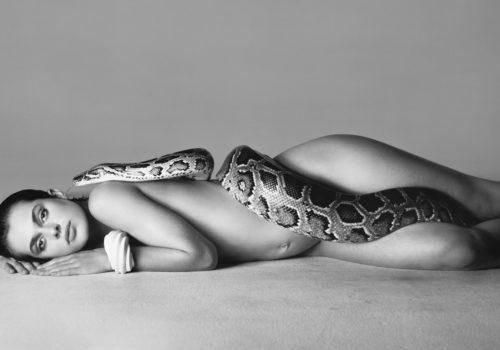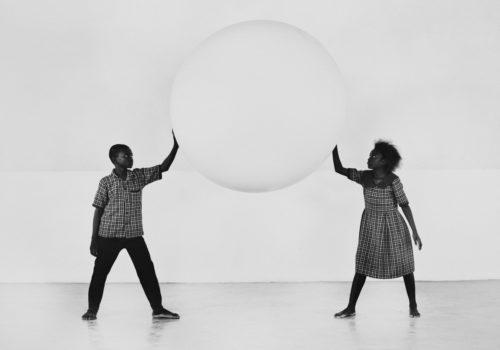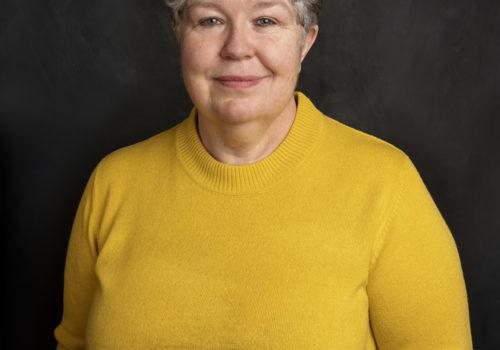Working in a variety of different mediums, Christian Boltanski’s practice includes large-scale installations, photographs and sculpture. His work touches the collective imagination and exposes the fragility of memory, while being deeply rooted in the artist’s own history. Conceived as a complete installation, an exhibition in London comprises new works, including a number of film installations.
On the ground floor of the Marian Goodman gallery, La Traversée de la vie (The Crossing of Life) sees the artist re-employ photographs he previously used for a work from 1971, entitled Album de photos de la Famille D. For this seminal piece Boltanski used found photographs from a 1950s family album belonging to one of his friends. Attempting to reconstruct the album in chronological order as an ethnologist would, he noticed it did not reveal anything specific about this family, but rather expressed their banality and predictability. Here, the photographs are enlarged and printed on thin and weightless veils, the delicate nature of which conveys the notion that the faded images belong to a past, which can no longer be fully grasped. The portrait genre in Boltanski’s oeuvre involves nameless faces, acting as ghosts of forgotten identities and making it difficult to trace the lives of people portrayed. In an effort to confront the loss of identity with the potential of recollection in our fast-paced contemporary world, he constructs a pre-determined and meditative path set by the position of the veils. One wanders among memories that are not our own, but which resonate with them, coalescing personal and shared memories.
After this part, one can discover two new monumental film installations facing one another across the main gallery space, two subtle variations of Boltanski’s recent series Animitas. On display are Animitas (Blanc), which was made in the bare and snowy landscape of Ile d’Orléans in Quebec in 2017, and Animitas (Small souls), made in Chile’s Atacama Desert in 2015. Their titles derive from the Latin word anima, which translates to “soul”, and animitas, a Chilean word which translates as “roadside shrine”. In each iteration, Animitas consists of hundreds of small Japanese bells with Plexiglas tags attached to a tall stem planted in the ground. The placement of the bells refers to the position of the stars on the artist’s birth date, and their chiming in the wind serves as a gentle metaphor for lost human souls. The question of the self is at the center of the films, and we are invited to sit on the nearby benches and contemplate these sanctuaries, as a way to confront our own solitary reflections.
The fleeting nature of all living creatures is also reflected in a new film installation titled Éphémères (Mayflies). The French word “éphémère” also translates as “ephemeral” or “temporary”, and in documenting the brief lives of these insects belonging to the Ephemeroptera group, the artist poignantly draws a parallel between the fragile nature of the insects and that of human life. The work acts as a transition within the itinerary of the exhibition, alongside the diptych Départ-Arrivée (2015), which consists of two signs composed of red and blue bulbs; a reminder of the abrupt start (“départ”) and end (“arrivée”) points on the arc of life’s passage of time.
On the upper floor of the gallery, Boltanski presents new work, Misterios (Mysteries), a three-screen monumental video installation which documents a site-specific project made in October 2017 for BIENALSUR, the Biennial of Contemporary Art of South America. Filmed in the remote, rocky and uninhabited environment of Bahia Bustamante in Patagonia, Argentina, the video work encompasses the energy of the wind, rocks and ocean into one powerful installation. Installed on the seashore, three colossal horns activated by the strong winds of the Chubut province produce a sound that resembles that of whales and reminds the viewer of haunting ancient myths, and an echo of ancestral times. “I think all my work was to ask questions, and not to have answers. And the biggest question is that I believe that everybody is totally unique and hence very important, and at the same time, everybody is so fragile,” writes Christian Boltanski.
Christian Boltanski, Éphémères
April 12 to May 12, 2018
Marian Goodman Gallery
5-8 Lower John St, Soho
London W1F 9DY
United Kingdom

